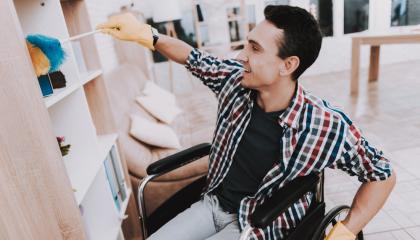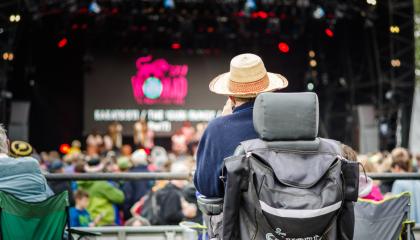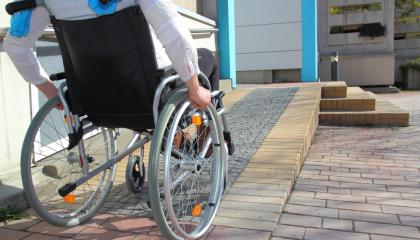To create an accessible world and to comply with ADA standards, accessible pedestrian signal (APS) models work with detectable warning tiles to keep pedestrians of all abilities safe around vehicle intersections and street crosswalks. These APS models mark heavily trafficked areas in cities with a button for audio directions for individuals with low visibility. A number of APS tools offer direction and aid to individuals with differing abilities, including a rapid tick sound, speech indication, tactile signals, and vibrating indications.
Interior home accommodations for individuals with disabilities can create a more welcoming and accessible living experience for friends, family, and visitors who deal with disabilities. Depending on whether or not you have someone who needs the accommodations daily or if you have the occasional visitor with disabilities, these interior home accommodations can make a big difference.
Make your home accessible for visitors with impairments by being aware of their needs within your home. This means taking a few steps back and looking at the layout of the space. You might need to make your home temporarily accessible for a family member or friend due to surgery or injury, caring for a loved one, or some other reason.
Whatever your reasons, there are many options for adding accessibility to your home, whether you need long-term accessibility or just for an occasional visit. In this post, we explore how to temporarily make your home accessible to visitors.
Cities are about to get much wetter as global warming increases the intensity of storms, raises sea levels, and disrupts established climate expectations. Moreover, grey infrastructures in cities are straining to keep up with the growth of urban populations. The pattern of increased storms and frequent flooding requires cities to be proactive in finding a solution for water management and emergency systems or risk being overwhelmed by flooding and constant clean-up.
The shift in weather patterns, temperatures, and precipitation has grabbed the attention of scientists, politicians, and society. With more than 80% of the United States population living in cities, studies reveal that these negative weather changes are heightened in these areas due to the infrastructure and population density.
Sidewalk cracks are often an accepted reality of city living, however, non-ADA-compliant and broken sidewalks often result in injury for pedestrians, unnavigable sidewalks for people with mobility devices, and lawsuits against the city.
It’s not unusual to find missing pavement, crumbling curbs, and weeds sprouting between cracks. However, for people who use wheelchairs, broken sidewalks can be impossible to navigate, forcing them to stay at home or use the road to get around. So a simple crack in a sidewalk is not so simple and potentially dangerous.
A few weeks ago, we talked about the importance of ADA compliance for a temporary event. Meeting U.S. government standards for a public area can be challenging in general, but a temporary event that is open to the public provides its own hurdles to overcome. ADA compliance at a temporary event can be difficult, but compliance is worth the work to create a more accessible world.
Creating accessible home accommodations for individuals with disabilities is crucial to ensuring that everyone is able to live safe, happy, and productive lives. While some homes may be built with accessibility in mind, most older homes are not. There are a number of minor and major tweaks you can make to a home to make it more accessible to family and friends with disabilities.
Questions to Ask
Before you can make your home more accessible you need to know exactly what needs to be improved. Ask yourself these questions and make a list of the things you can fix:
Individuals with limb differences or amputations are often overlooked in our society today. While some choose to use a prosthetic, others don’t. Every experience is unique, from people who have had their limb differences since birth, to others who have had a limb amputation due to accident, injury, or disease.
A few weeks ago, we talked about the importance of ADA compliance for a temporary event. Meeting U.S. government standards for a public area can be challenging in general, but a temporary event that is open to the public provides its own hurdles to overcome. ADA compliance at a temporary event can be difficult, but compliance is worth the work to create a more accessible world.
Pagination
- Previous page
- Page 3
- Next page
Connect with us
We pride ourselves on our customer service, and we'd love to hear from you! Sign up for our newsletter to keep up with industry updates and trends, as well as any new product releases.












